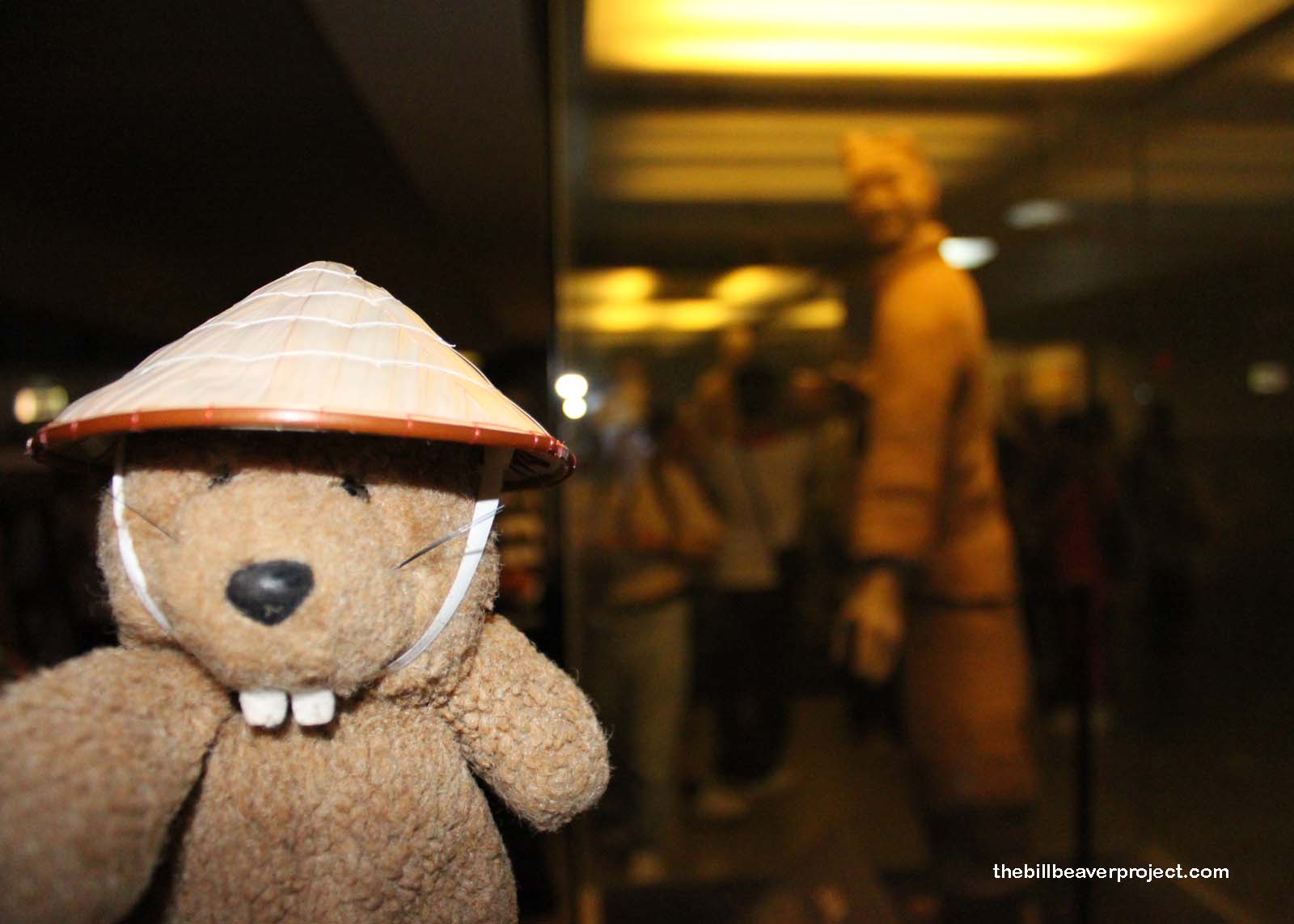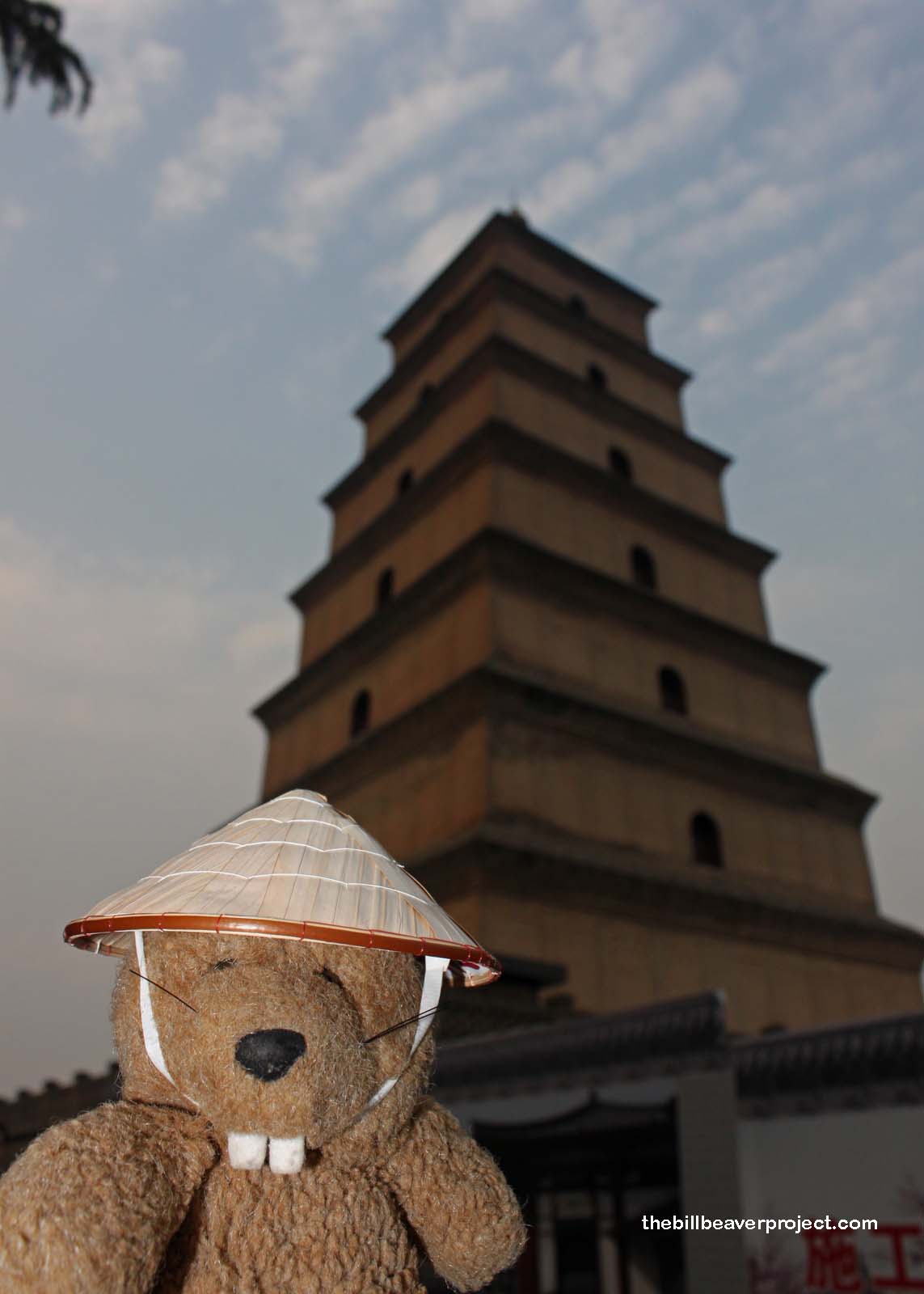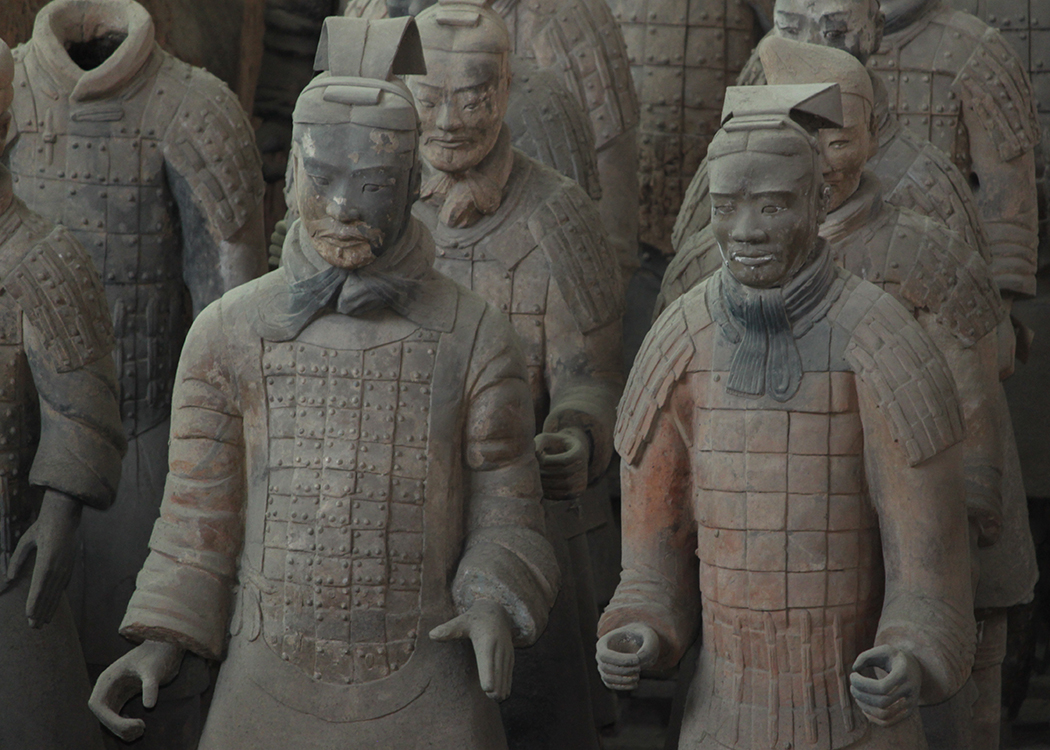 Previous Day |
Xi’An |  Next Day |
Herro, everyone!
Today is another exciting day! It’s a day to see one of those great big “Can’t-Visit-China-Without-Seeing-It” sorts of places. Do you give up yet? How about a hint? They’re Chinese, but their name is Italian. Give up? The Terracotta Army!
Frank took us to a Terracotta Tourist Trap this morning, but at least he was full of information about these warriors. They were built from 246 to 209 BC for Emperor Qin Shihuang, the emperor responsible for the Great Wall, the unification of China, and the standardization of Chinese writing. He accomplished a lot for a mean guy, who had all of his artists, craftsmen, workers, and barren concubines sealed alive into his tomb, so they couldn’t say a word about their craft or the real emperor. In short, the people hated him so much that they burned his 30-km palace to the ground, but they have not touched his mausoleum, in which his bronze coffin floats in a sea of mercury below a galaxy of pearls. In fact, archaeologists haven’t touched it yet either, because they’re afraid the relics would decay if they let in the air. That would be a great shame indeed. Until then, I’ll use my imagination, and it’s glorious!
 |
A farmer rediscovered the warriors in 1974, and immediately, the government repossessed his land and gave him a new job meeting dignitaries and signing books all day. No, really, he has a booth at the museum, but he wasn’t there when we were. Too bad! I wanted to meet him!
The museum was a lot bigger than I expected: a theater, a restaurant, and three buildings over three big pits. I was surprised to learn that the warriors were never meant to guard the Emperor after death but to scare off angry peasants who might vandalize his tomb while he was alive! I would sure be scared if I found myself face-to-face with a clay army wielding their weapons! Every warrior is still unique, modeled after individual soldiers. Many of them were painted too, but the paint faded when they were dug up. Frank told us a funny story about one warrior that was a little too realistic, because it was actually a German tourist who had snuck inside, in full armor, climbed into the main pit, and stood there in the ranks for a whole day! That would have been terrible if he had forgotten to go to the bathroom before!
Frank hurried us through here as well, but not like Shine. We had to be on our way to the Shaanxi History Museum before it closed at 4:00. Luckily, we stopped for lunch at the museum restaurant and watched the chef prepare noodles by stretching the dough until it separated into strands! He didn’t even have to use a knife! That was almost as spectacular as our last, must-see stop on our whirlwind tour of the terracotta museum: the bronze exhibit, where the great chariots were kept. These chariots are so intricately crafted that they look like they’re alive; well, at least the horses do. The chariot was designed to carry the emperor’s soul to the afterlife, which left me wondering two things: what happened to the souls of the workers, and what did the charioteer do after the emperor’s soul was in the afterlife? Working for the emperor must have been the pits!
We blazed a new trail back into Xi’an. Our driver even cruised past traffic in the emergency lane! I had to shut my eyes and curl into a ball; it was so scary! But, we made it to the Museum with fifteen minutes to spare, so all the adrenaline was worth it! There was so much to see at the museum! Oh boy, where do I even begin? I’ll give highlights. Did you know that hominids were in China as early as 770,000 years ago? Or did you know that the Silk Road was built to bring better horses into China, like the Akhal Teke, or blood sweating horse? Or… did you know that the same traders from the Middle East brought the lions that would become such a big part of Chinese culture? Betcha didn’t. Now ya do!
 |
Whew! There has been a lot to fit into today, but that was hardly the last of it! We still had to visit the Big Wild Goose Pagoda! Like in Beijing, there was a drum and bell tower here. The bells would ring in the morning to open the gates, and the drums pound at night to close them. This wonderful structure was built in the western courtyard of the Da Ci’en Temple in 652 AD to house Buddhist scriptures and relics. It has fallen apart once, been restored, yet still leans a bit from age, which I guess happens to all old geese.
The rest of the temple continues to be operated by monks, and there are intricate jade altars to Sakyamuni Buddha and Guanyin, who hears the cries of the world. It is a beautiful, tranquil place to finish a day of running.
There is a place in the northern part of the temple where the temple’s former abbots rest in tall, stone structures. Hundreds of symbols are etched across these monuments. I asked Frank if they were prayers. He shook his head and said they were the names of disrespectful visitors. Suddenly, I felt very sad. I sat down, and I started to cry. Who would do such a thing to the final resting places of holy people? I must have cried at least three tears for each name scrawled on the stone there, the sort of weeping that embarrasses the group you travel with. Not many people like to spend time around a crying beaver. They barely gave me a moment before carrying me off to our next destination. I hope that you, who are reading this, have always shown the greatest respect for special places like Da Ci’en and the people they cradle in their walls.
I was still sad for the beginning of our big dumpling banquet at the Tang Dynasty Show. My appetite wasn’t what it had been. Instead, I became distracted by a peculiar man sitting on the level above us, staring at us unblinkingly. He scarcely moved for fifteen minutes! It was… funny. The whole table started to giggle uncontrollably, but he never moved. He just smiled down at us like a loving older brother. By the time he finally disappeared, my appetite had returned. Laughter really is the best medicine, and it may be the only one that China has in common with the West. The dumplings were delicious, but as for the show, I was so exhausted from such a long day that I had to fight off sleep to make it to the end. I did enjoy the jubilant “Harvesting Chinese Dates” trumpet solo, especially when the performer let down his trumpet and kept the sounds going with nothing but his mouth! That alone made the show worthwhile, and by the end, I was happy again, sleepy, but happy.
Tian Meng!

 Previous Day |
Xi’An |  Next Day |
